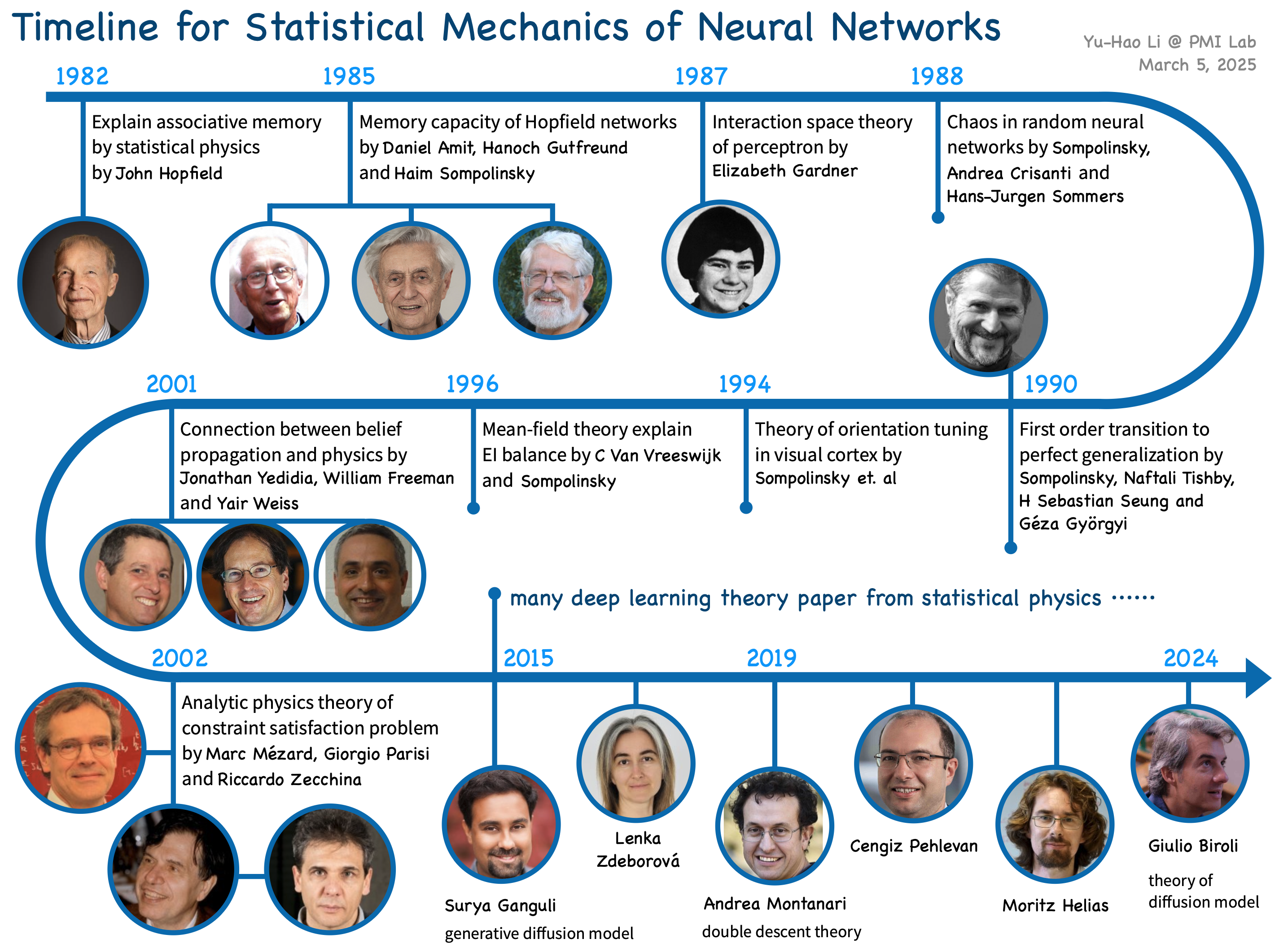Timeline for Statistical Mechanics of Neural Networks

References:
[1] J. J. Hopfield, Neural networks and physical systems with emergent collective computational abilities, Proc. Natl. Acad. Sci. U.S.A., 1982.
[2] D. J. Amit, H. Gutfreund, and H. Sompolinsky, Storing Infinite Numbers of Patterns in a Spin-Glass Model of Neural Networks, Phys. Rev. Lett., 1985.
[3] E. Gardner, The space of interactions in neural network models, J. Phys. A: Math. Gen., 1988.
[4] H. Sompolinsky, A. Crisanti and H. J. Sommers, Chaos in Random Neural Networks, Phys. Rev. Lett., 1988.
[5] H. Sompolinsky, N. Tishby, and H. S. Seung, Learning from examples in large neural networks, Phys. Rev. Lett., 1990.
[6] G. Györgyi, First-order transition to perfect generalization in a neural network with binary synapses, Phys. Rev. A, 1990.
[7] R. Ben-Yishai, R. L. Bar-Or, and H. Sompolinsky, Theory of orientation tuning in visual cortex, Proc. Natl. Acad. Sci. U.S.A., 1995.
[8] C. van Vreeswijk and H. Sompolinsky, Chaos in Neuronal Networks with Balanced Excitatory and Inhibitory Activity, Science, 1996.
[9] J. S. Yedidia, W. T. Freeman, and Y. Weiss. Generalized Belief Propagation, Advances in Neural Information Processing Systems, 2000.
[10] J. S. Yedidia, W. T. Freeman, and Y. Weiss. Constructing free-energy approximations and generalized belief propagation algorithms, IEEE Transactions on Information Theory, 2005.
[11] M. Mézard, G. Parisi, and R. Zecchina, Analytic and Algorithmic Solution of Random Satisfiability Problems, Science, 2002.